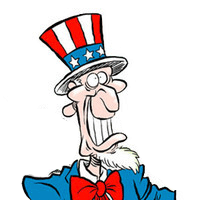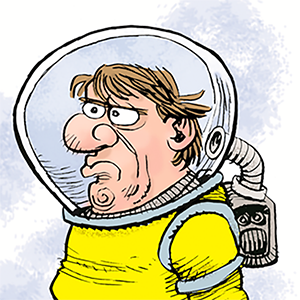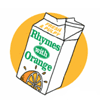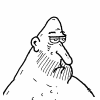Paul Sullivan: Winter is coming, but the Cubs' offseason strategy is on a need-to-know basis
Published in Baseball
CHICAGO — Jed Hoyer and Carter Hawkins went to Las Vegas this week to lay the groundwork for the 2026 season, just like the executives from the other 29 teams.
The message the top executives sent back to Chicago Cubs fans was they would focus on pitching, feeling the position players are basically set with everyone coming back but one guy.
That one guy is the top-ranked free agent on the market, Kyle Tucker, but never mind that for now.
Hoyer told reporters at the GM meetings that the Cubs could “play a game tomorrow if we needed” because they have players returning at every position. Though the weather in Chicago was better than it was at most home games in April and early May, Wrigley Field was getting ready for Saturday’s Michigan-Northwestern game, so there was no need for Hoyer to prove it.
If opening day were in mid-November, the Cubs lineup would be mostly set. The only thing missing is fans complaining about Craig Counsell’s batting order.
Of course, in case you forgot, the Cubs finished second in runs scored and slugging percentage in the first half of 2025, then ranked 20th in runs scored and 15th in slugging in the second half. They hit a combined .221 in the postseason, averaged 3.0 runs per game and struck out 29.2% of the time.
But, hey, as long as they have a player who can play every position tomorrow, everything’s fine.
So pitching is the real focus for the Cubs, even as they told Shota Imanaga last week that he wasn’t worth a three-year, $57.75 million option and let him become a free agent (after he turned down his two-year, $30.5 million player option).
Hoyer noted in Vegas that the Cubs would be happy to have Imanaga back on a better deal, and even gave him the $22.025 million qualifying offer to prove they still love him, at least for one season. Or maybe they just wanted the compensation pick they would get if he signs elsewhere. True love is a tricky thing to find in this day and age.
Imanaga has until Tuesday to decide how much reciprocal love he has for the Cubs, who brought him here without much fanfare and watched him become a beloved star in his first season, only to pass him over for a start in a do-or-die Game 5 of the National League Division Series against the Milwaukee Brewers.
The likelihood of Imanaga accepting the $22 million qualifying offer when he can at least double that on the open market seems slim. If he did accept it, that also would make him a free agent going into a possible lockout year of 2027, which might be a turnoff for him and his agent, assuming they both like making more money.
Perhaps the Cubs still will bring Imanaga back on a two-year deal? Hoyer won’t rule out anything, which is always the correct call when you’re speaking with reporters trying to determine your next move. We do know Jed enjoys being “stealthy,” while Counsell was a veritable Secret Squirrel during the postseason, keeping his rotation decisions under wraps until he had to announce someone was starting that day.
That’s why they’re such a good tag team with the media: mum and mummer.
Hoyer can’t reveal his budget for proprietary reasons, of course. But let’s guess the payroll is around the same as in 2025, when the Cubs ranked 10th at $214 million, according to Sportico.com. Maybe a little higher, just to show the Cubs are trying hard to catch the pesky Brewers.
With the likely losses of Tucker and Imanaga, they’ll have plenty of room to spend and still remain under the luxury tax.
Remember all the money they saved last spring by missing out on third baseman Alex Bregman, who signed with the Boston Red Sox? They reportedly offered $130 over four years and watched him sign for $120 million for three years, with an opt out that Bregman exercised.
“Within the structure and our finances, we made the best offer we could make,” Hoyer said at the time, failing to suppress his frustration over the failed attempt to get a bona fide All-Star.
Eh. No problem. The Cubs would have plenty of money to spend at the trade deadline, right?
The Cubs wound up getting Mike Soroka, Andrew Kittredge, Taylor Rodgers and Willi Castro at the deadline with all that extra dough. Only Kittredge made a real difference, and the reliever was promptly dealt back to the Baltimore Orioles after the season, even as the Cubs are focused on improving the pitching.
Go figure.
Surely the Cubs will spend now since they’re coming off a playoff season and have payroll flexibility down the road. After next season, the Cubs’ only payroll obligation is Dansby Swanson’s $28 million salary. Colin Rea, who re-signed last week, has a $7.5 million team option in ’27, while Matthew Boyd and Carson Kelly have mutual options in 2027 — $15 million for Boyd and $7.5 million for Kelly.
The books look clean, and revenues are only going up for the Cubs in 2026, with some fans buying season tickets for the opportunity to get All-Star Game tickets at Wrigley in ’27.
President of business operations Crane Kenney told WSCR-AM 670 last summer that a Cubs-Red Sox game at Wrigley was the most sought-after ticket in team history. Imagine the market for the Cubs-New York Yankees series from July 31-Aug. 2 at Wrigley, when Aaron Judge comes to the North Side. Wrigley is a cash machine, and the Rickettses only need to open the doors for it to work.
So money should be no concern this winter, no matter what Hoyer says about the budget. The Cubs need another frontline starter to join Boyd, Cade Horton, Justin Steele and Jameson Taillon — with Rea as the swing man and prospect Jaxon Wiggins on the cusp — and perhaps three or four high-leverage “out-getters” to go along with closer Daniel Palencia.
And if the Brewers trade ace Freddy Peralta for prospects, which is their traditional strategy for future free agents they don’t intend on paying, such as Josh Hader, Willy Adames and Devin Williams, the Cubs probably don’t need to overspend to close the gap. Why go all out if the competition is willing to downsize?
But are the Cubs downsizing, too, if they let Tucker leave and don’t replace his bat with another free agent? When Hoyer traded for Tucker last winter, elated fans clamored for Chairman Tom Ricketts to sign him to a long-term deal. When Tucker had a great first two months, the clamoring continued.
But now? No clamoring. A poor second half and only one RBI from Tucker in eight playoff games killed that buzz. Most Cubs fans seem just fine with him leaving, whether he’s ranked No. 1 or not, as long as the money goes to another middle-of-the-order slugger.
The return of Kyle Schwarber would be the preferred option, though Hoyer doesn’t seem interested in making amends for nontendering him back in 2020. The return of Cody Bellinger also would be welcomed, though Hoyer sent him to the New York Yankees in a salary dump, and Bellinger might now be out of his price range.
And since the Cubs are focused on pitching, Owen Caissie will probably get another audition. Check back next month at the winter meetings, when the Cubs’ game plan will be made clearer.
Until then, mum’s the word.
©2025 Chicago Tribune. Visit chicagotribune.com. Distributed by Tribune Content Agency, LLC.







Comments